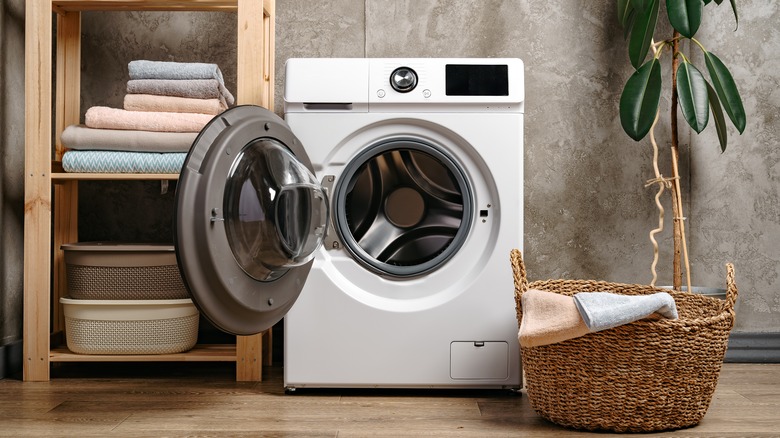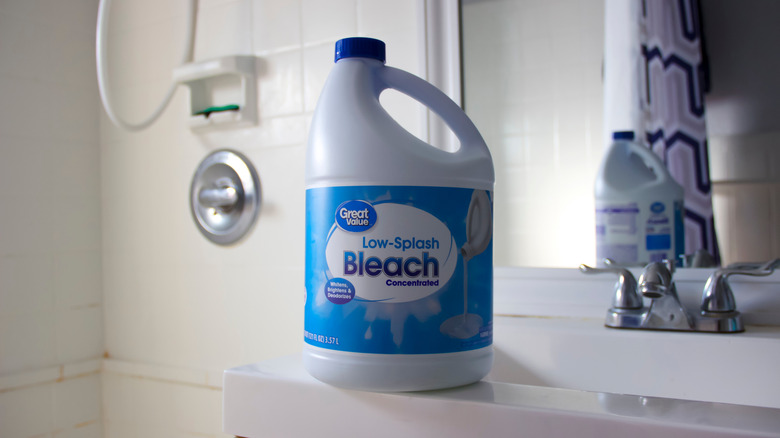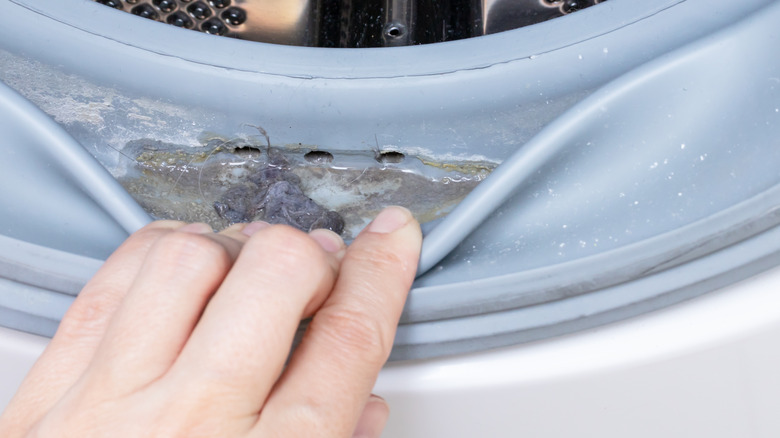Easily Clean Mold Off Your Washing Machine's Door With This Bathroom Essential
Mold, an unwelcome visitor in our homes, often finds refuge in the most unexpected places. Today, our focus is on an often-overlooked culprit: the washing machine door. While the washing machine is a symbol of cleanliness, its door can become a breeding ground for mold, presenting a unique challenge for many homeowners. There is a simple solution to this common problem that can be found amongst your bathroom cleaners and household products: bleach. First though, understanding the dynamics of how and why mold thrives on these surfaces is the first step toward effective prevention and elimination.
To comprehend the gravity of the situation, it's essential to recognize that mold on washing machine doors is not merely an aesthetic concern. Beyond the unattractive stains it leaves behind, mold can pose health risks. Inhaling mold spores can trigger respiratory issues and allergies. This aspect adds a layer of urgency, and thus, addressing mold on washing machine doors becomes not just a cosmetic endeavor, but a crucial step in maintaining a healthy living environment.
The dynamics of mold growth are intrinsically linked to the design of washing machines. The dark, moist environment created by the door's rubber gasket provides an ideal habitat for mold to flourish. This unique characteristic of washing machines emphasizes the importance of a tailored approach to cleaning and prevention.
The power of bleach
From disinfecting surfaces, cleaning bathrooms, and sanitizing laundry, bleach's applications are diverse. Beyond this role, however, bleach possesses remarkable mold-fighting properties. The active ingredient, sodium hypochlorite, is a potent disinfectant that not only kills existing mold, but also stops regrowth if used effectively and all traces are removed. These reasons position bleach as a versatile and powerful tool for addressing the specific challenges posed by mold on washing machine doors.
This versatility adds an extra layer of value to an already cost-effective household product, which makes it a convenient choice for battling mold, avoiding the need to purchase specialized cleaners. This accessibility ensures that homeowners can readily tackle the issue, transforming bleach into a simple, first-step choice to combat mold-related issues. It is worth noting that while bleach is effective at removing mold, avoid making this mistake: it is not recommended for porous surfaces, as it only addresses the surface and does not reach the spores that are deeply impregnated. This method is only really an effective solution for non-porous, hard surfaces, which is why it's perfect for a washing machine door.
A guide for success
Embarking on the journey to conquer mold on your washing machine's door requires a well thought out battle plan. Before diving into the cleaning process, it's important to take precautions, like ensuring proper ventilation. The fumes from bleach can be potent, and adequate ventilation protects against any potential respiratory irritation. This approach sets the stage for a successful mold-cleaning operation.
Understanding the washing machine door is important for an effective cleaning. Mold often hides in the folds and crevices of the rubber gasket, which presses up against the door when the machine is in operation. By comprehending the nooks and crannies of this intricate design, homeowners can target their cleaning efforts precisely. This step not only ensures a thorough cleaning, but also prevents the oversight of potential mold-hiding spots. The application of bleach requires a delicate balance. Diluting bleach appropriately prevents damage to the rubber gasket and preserves the integrity of the washing machine.
Dilute the bleach in the ratio of 1 part bleach to 4 parts water. Put it in a spray bottle and spray the solution onto the door and into all areas the door may come into contact with, such as the seal and gasket. Let it sit for a few minutes, and then wipe it away with a cloth. If mold continues to be a problem, then using bleach in your washing machine drawer and drum and running the hottest cycle will make sure the bleach penetrates all parts of the machine.


